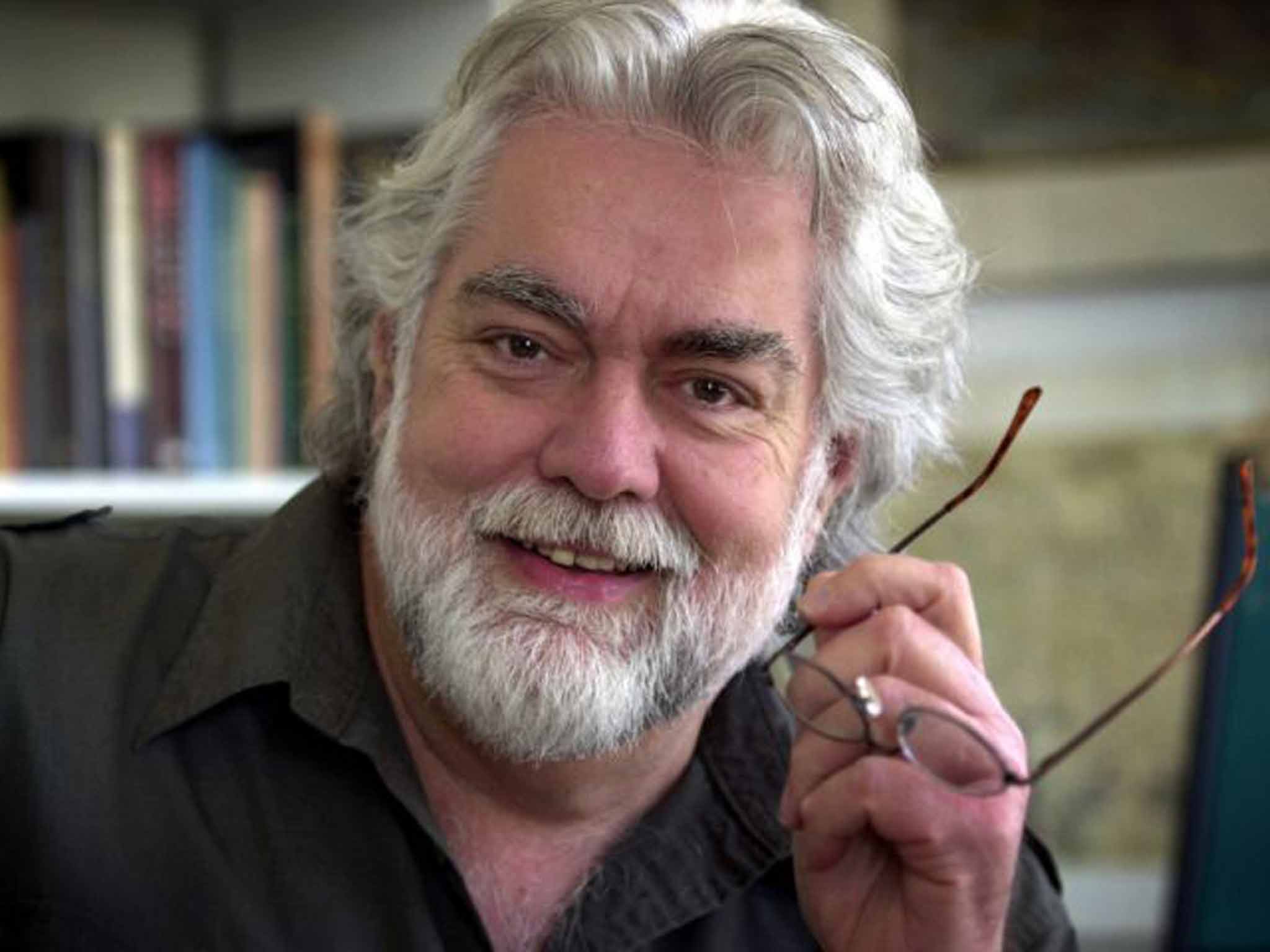Gunnar Hansen: Actor and writer who was best known as Leatherface in the horror film 'Texas Chainsaw Massacre'
He also worked for various magazines and in 1993 published a travel memoir, Islands at the Edge of Time: A Journey to America's Barrier Islands.

As an actor Gunnar Hansen was best-known for one film, becoming a great favourite with horror fans, yet throughout it he wore a mask so that his face was never seen. Having starred as Leatherface in Texas Chain Saw Massacre, he turned for a while to writing before combining his new and old careers, though never with so great an impact as in his first outing.
Hansen, who has died of cancer, was born in Reykjavik, but his family moved to Maine when he was five, and from there, when he was 11, to Austin, Texas. He majored in English and maths, moving on to Scandinavian Studies and English. During school and college he worked in a variety of jobs, including computer operator, while at other times his 6ft 4in frame came in useful as a bouncer.
In 1974 he auditioned for a summer job – a part in Tobe Hooper's Texas Chain Saw Massacre. When a group of teenagers hear that their grandfather's grave has been desecrated they take some friends to investigate, only to encounter a sadistic lunatic and his cannibal family. Leatherface was very loosely inspired by the notorious necrophiliac murderer Ed Gein – also the inspiration for Psycho's Norman Bates and Buffalo Bill in The Silence of the Lambs; his mask was supposed to have been fashioned from the skin of one of his victims. It was a low-budget production, and Hooper squeezed everything he could from the schedule. Through three weeks in a Texas summer, Hansen's costume was never washed and he wore the mask 12-16 hours a day: by the end of the shoot he smelt so bad that everyone avoided him. With a minimal special-effects budget Hansen wielded a real chainsaw, sometimes dangerously close to the other actors.
Hansen took the role seriously, studying the behaviour of mentally handicapped people and investing the non-violent moments with a pathos, portraying Leatherface as a lost soul in a dysfunctional family. Hoping the might receive a PG rating, Hooper toned down the violence, though the mood of terror and threat (the last reel is accompanied almost exclusively by terrified screams) led some early critics to imagine – and report – something far more explicit. But it was rated R, meaning that under-17s had to be accompanied, excluding a key audience. It met similar problems, with censorship and outright bans in several other countries.
In Britain the BBFC recognised the film-making skill but banned it and, despite two reappraisals, concluded that the lack of explicit material made it impossible to effectively cut what BBFC director James Ferman described as “the pornography of terror”. Home video brought a brief period of availability before the Video Recordings Act banned it as a video nasty until changing tastes and academic respectability made it available uncut.
Despite all these travails, it went on to make $30m, though for the cast and crew the deferred payments were less generous than had been implied. Some of them sued but labyrinthine deals had given the rights to a company that eventually went bankrupt.
But Hansen became in demand, albeit in low-budget horror. Demon Lover (1977) is another “teenagers in a graveyard” film, though without Hooper's flair and, after playing Professor Peckinpah, Hansen left acting to write. He worked for various magazines and in 1993 published a travel memoir, Islands at the Edge of Time: A Journey to America's Barrier Islands.
Eventually he was lured back to the cinema, accruing more than 30 credits, though the films never matched the creativity of Chainsaw. They played with the usual tropes (endangered teenagers, mad doctors, Satanism, deranged sadists), occasionally pushing at the boundaries of taste: The Deepening (2006) follows a 9/11 fireman with PTSD who moves to a small town in which murders ensue. He also regularly wielded the weapon that made his name, as in the 1988 comedy-horror Hollywood Chainsaw Hookers and 2004's Chainsaw Sally.
In 1991 he played a town drunk, tying together the portmanteau Campfire Tales. Mosquito (co-starring the former Stooges' guitarist Ron Asheton), about mutant insects, is something of a throwback to 1950s horror but with added nudity, while Freakshow (1995), with Hansen as the Freakmaster, is a retelling of Tod Browning's classic Freaks. A slight sidestep came with The Business (2004) a short about a young man growing into the family crime business, but in 2009 Hansen returned to his birthplace for Reykjavik Whale-Watching Massacre; its mixture of comedy and horror was something to which Icelanders were unaccustomed.
Hansen avoided most of the Chain Saw spin-offs, partly because none offered a large enough salary, but finally took a small role in the critically reviled cash-in sequel/prequel Texas Chainsaw 3-D (2013), both as a new character and through recycled footage from the first film. That year also saw the publication of Chainsaw Confidential, Hansen's comprehensive book about the making of the original film.
The Hansen-penned Death House, a jailbreak-horror film, will be released next year and stars another giant of the horror genre, Robert Englund, Freddy Krueger from the Nightmare on Elm Street franchise.
Gunnar Hansen, actor and writer: born Reykjavik 4 March 1947; married Betty Tower; died Maine 7 November 2015.
Subscribe to Independent Premium to bookmark this article
Want to bookmark your favourite articles and stories to read or reference later? Start your Independent Premium subscription today.

Join our commenting forum
Join thought-provoking conversations, follow other Independent readers and see their replies